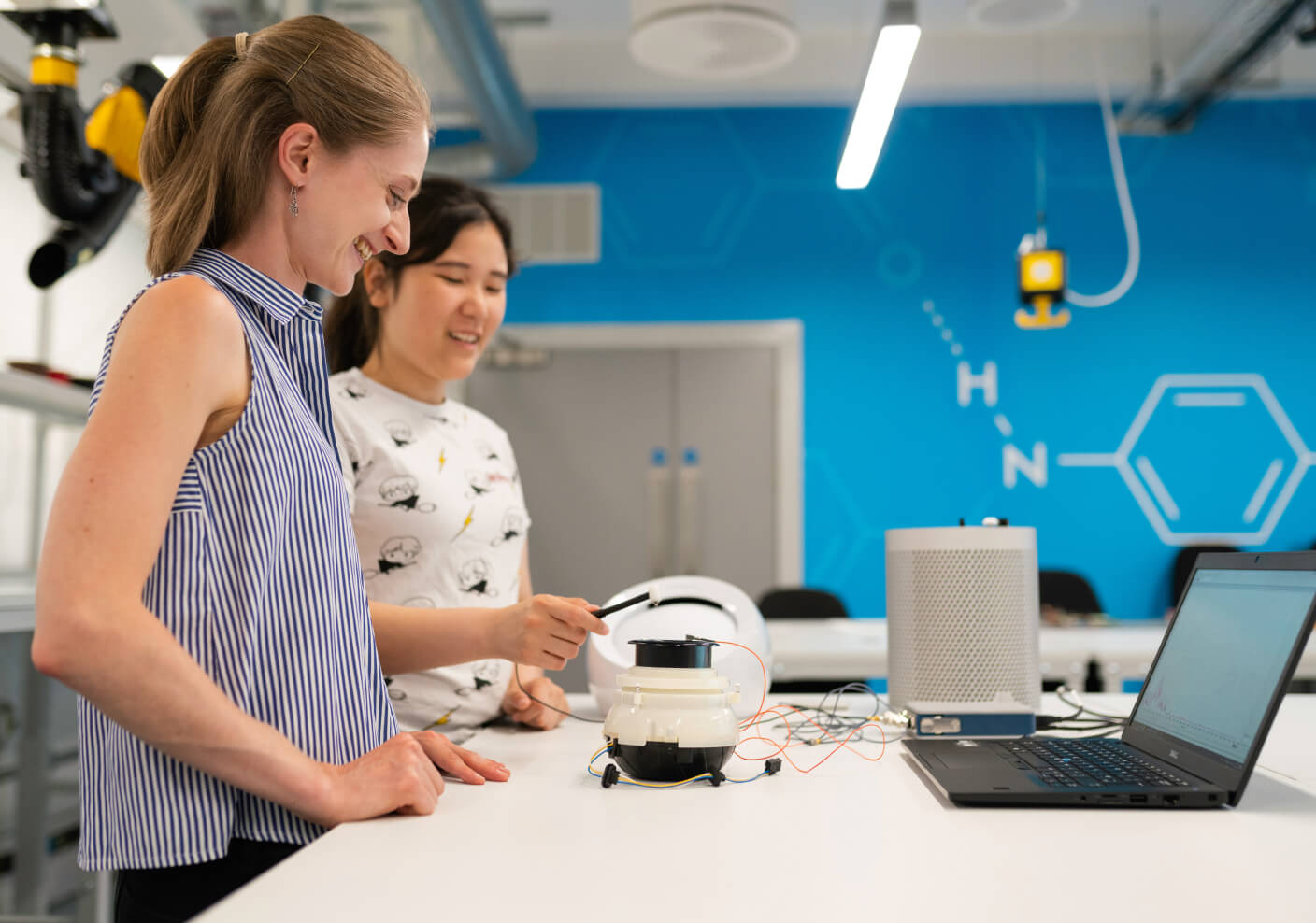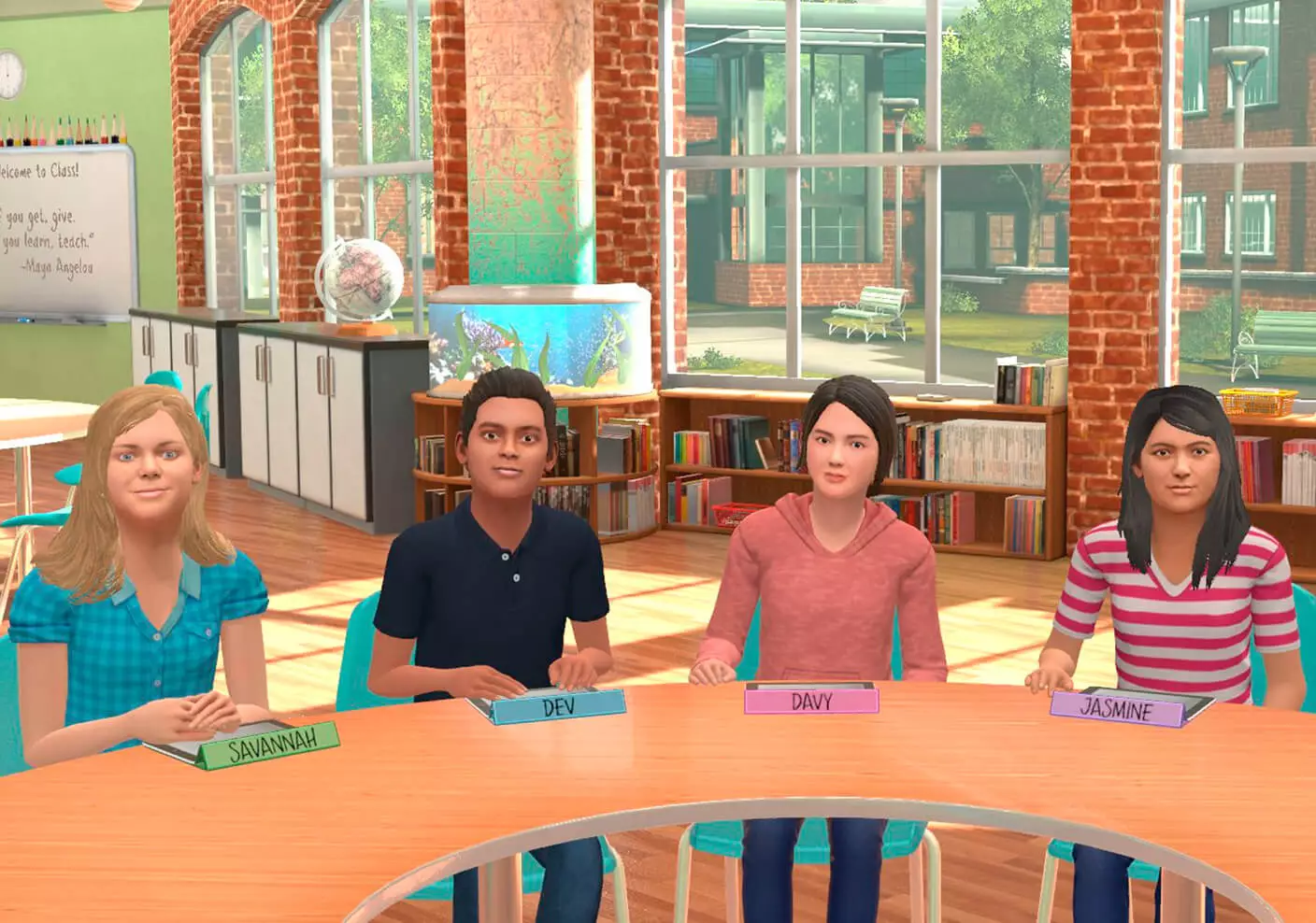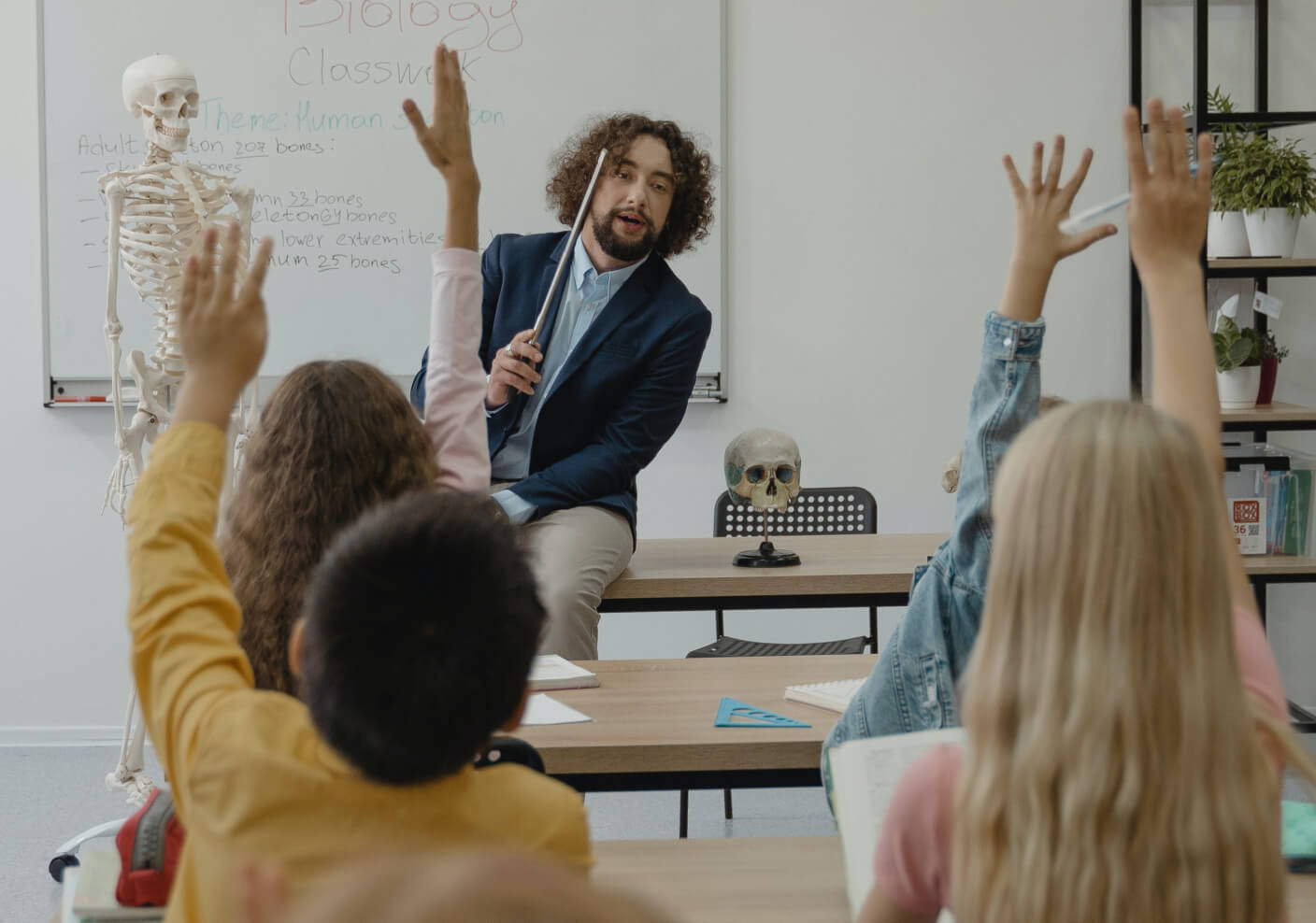Mursion recently hosted Dr. Lynn Gangone, president and CEO of the American Association of Colleges for Teacher Education (AACTE), for an informative and insightful conversation with our CEO Mark Atkinson. This fireside chat was part of our Future of Education series.
Below is an excerpt of Dr. Gangone and Atkinson’s discussion with some key takeaways about how teacher preparation has pivoted during the pandemic and national movement for equity, including a heightened awareness of the versatility of virtual reality training. You can watch the full session on our YouTube channel, as well as learn more about our virtual reality training offerings for educators.
Mark Atkinson: Lynn, thank you so much for being with us today. I think we are extremely fortunate to have your insights and your experience especially at a time like this. I think everybody in the audience would love to hear more about, from your vantage point around the United States, how has teacher preparation adapted to COVID? What do you see as the models of people that have pivoted and used the crisis to whatever advantage it can be put to and some of the emerging best practices, I think, would be great to hear?
Dr. Lynn Gangone: What’s interesting, before the pandemic we had a strategic planning process. What we did during that process was that we created a vision to revolutionize education for all learners. We had no idea how prescient that was because the pandemic while it has been and continues to be just something that is indescribable. The fact that we still haven’t gotten ourselves under control in this country to the detriment of so many is just painful. However, I think educators are smart people and we know when to look at something and say the old expression, “How can we make lemonade out of lemons.”
I do think that that revolution has been pushed a bit by the need that we’ve had to think very differently about how we deliver education to our students, how we deliver K to 12 education, how we deliver higher education, and in our particular case, what happens to candidates who need that real, on-ground experience typically to be classroom-ready. Part of what I’ve seen happen in our colleges of education around the country is that our deans and our faculty are willing to take some risks perhaps that they were unable to take previously.
I also think that has to do with the fact that states and state agencies who we work with very closely, by the way, at AACTE have also seen that they need to give a little during this crisis and to allow institutions, perhaps a little more bandwidth to really do the kind of work they need to do. I think a combination of things has actually introduced levels of innovation and levels of collaboration. I’ll give you an example. One of the things that we have done at AACTE is that we were very clear about partnering with ISTE which is the International Society for Technology and Education.
They’ve historically been working with K to 12 teachers. We obviously work with higher education faculty but the combination of the two, I think, have helped us to deliver how do you manage an online learning environment and what are the innovative techniques? Certainly, the inclusion and the collaboration with Mursion is part of that. What we know is that Mursion was being used before. We have the research up there, we have the ways in which our institutions have used the platform, but because of the collaboration, and because you saw, and we saw the need to really reach out and give institutions the opportunity to still deliver high-quality preparation without having to be on the ground, that’s another example of something that may have been seen as an extra before, that really has turned into, if there’s a term like an everyday innovation, that we’re able to use to really reach our candidates.
There are just a lot of examples of how this pandemic has forced us to think differently about what we do and how we do it. As a side note, I do hope that when this is over, people do remember how much they appreciate teachers because we have heard so much from parents around the country, around how difficult it is to actually educate their children, as well as take care of their social and emotional learning needs. I’m hopeful that some of this work that we’re doing, that we’ll continue to innovate, that we’ll find even more interesting ways of delivering education across the board from pre-K to 12, to higher ed. That we will learn that the virtual reality can be in fact such a value-add and produce similar if not better results for our students.
I do hope that when this is over, people remember how much they appreciate teachers because we have heard so much from parents around how difficult it is to educate their children, as well as take care of their social and emotional learning needs.
MA: That’s super helpful. I suppose the whole enterprise of clinical experience is going through a rethinking right now. What does that boil down to and how does simulation fit into that, in your perspective?
LG: To me, the importance of clinical experience is the candidate’s opportunity to truly be in the classroom, and engaging with students of all types, and that that’s done with a mentor teacher. The fact that we’re not just putting students into a classroom like we used to, and have them observe a teacher. What we’re doing is we’re saying, in order for you to be classroom-ready, you need to understand the complexity of the students that you serve, and in order to do that, you need to be immersed, and you need to be coached.
I always say that when I think about coaching, I’m a former athlete and I think about coaching to excellence. People sometimes think, why does someone needs to be coached? Aren’t they good enough already? Well, you coach to excellence. Roger Federer is coached to excellence. Serena Williams is coached to excellence. The two greatest tennis players in the world, they don’t just go out there and play tennis. The idea of being able to have that student in the classroom, whether that classroom is on ground, or virtual, and have them have to really manage, like I said, the complexity of the students that they serve, and coached in doing so.
You coach to excellence.
Remember, our biggest goal is to not bring harm. We’re educators, we want to make sure that we are caring for our kids, not in some way, shape, or form having unintended bias or perhaps reacting to a student one way or another because they’re male or female. I used to do a lot of work in terms of how teachers would react to boys and girls and the kinds of questions they would ask boys and girls and how they were really gendered. Boys would get asked complex questions and girls would get asked yes or no questions.
Implicit bias shows up in so many ways, and the master teacher, the coach, whether that’s a faculty member on a campus or the teacher in the classroom, ideally, both of them are witnessing this and can help that candidate move to excellence. That’s why I see clinical practice as being key to classroom-ready teachers.
MA: So much of what you just said reminds me of the other great national crisis that has been taking place amidst COVID. That has been the national awakening around race and its prevalence in multiple forms of our society, including issues around education. As you think about efforts to promote an anti-racist agenda in schools and to diversify both the teaching workforce and also the treatment of children in a fair and equitable way, can you say something about how you think about teacher preparation evolving along those lines and where simulation may or may not fit into that evolution?
LG: That’s a great question, and a really important question. We have called it the dual pandemic at AACTE. We’ve talked about both COVID-19, and unfortunately, throughout the deaths of our Black brothers and sisters, the elevation of understanding of systemic racism. This has always been front and center in teacher education.
This is in our DNA, however, we have fallen short, we still know that the majority of teachers are white women, and we still know that it’s very difficult for candidates of color to come into the profession, and we still know that there is implicit bias that exists and certainly systemic racism. For AACTE, we have been doing a lot of work in this area, everything from looking at how entrance requirements to programs impact students and their capacity to become a teacher candidate.
We also have been working on ways in which to amplify and support those candidates of color. AACTE has its Holmes Scholars Program, and again, it’s a now legendary program in the field of education, where we allow institutions to join us in mentoring and coaching students of color who want to be predominantly faculty, at colleges of education around the country, but also want to do policy work, also want to get into association work, also, perhaps even want to get into teaching and perhaps the principalship and the superintendency.
I could go on and on because this is a big deal for AACTE, but I also want to go to simulation because that’s critical. One of the things that’s really great about Mursion is that you have done the work to present a multi-ethnic, multi-leveled classroom environment so that students that are in the simulation are interacting with Black students, Brown students, Asian students, Native American students. They have that moment where, in a coaching situation, we can observe them in terms of how they respond to that student.
In a simulation, if we exhibit that, then we are not bringing harm to a human being in that moment. It’s a simulation. To me, that’s one of the powers of Mursion is that we have that capacity to step back and then learn with intention. Each and every one of us every single day has to say to ourselves, “Oh, why did I have that response? What was I thinking?” Simulation gives us that opportunity to test out and to deal with our own biases in ways that I think can be really powerful and not bring harm.
MA: I want to keep on what you know about the culture of schools and maybe shift to the role that simulation can play in the interactions that adults have in building a framing mechanism of where some of this bias that you’re speaking to might come from, have you all seen some of your members experimenting with that? Any of the insights you’ve gleaned from folks doing that kind of work?
LG: I think that’s a great question. We would really love to move Mursion beyond the candidate, work into work with the faculty of colleges of education. It’s no surprise that our college of education faculty would often mirror our pre-K to 12 teachers, predominantly female, predominantly white. Look, I’m not saying anything against those folks.
They’re good, good people who’ve dedicated their lives to education, but there’s a limitation to experience that occurs. To the extent that we can bring men and women of all races and ethnicities into the Mursion space as faculty, that could be incredibly powerful. I really do hope that one of the things that comes out of our collaboration is that we’re able to do some of that work because it does need to happen. Again, if all of us are in this space of needing to be intentional and needing to always counteract our inherent bias, this is not a blame statement.
This is simply if we want excellence and I believe excellent is equity. Equity is excellent. It’s unfortunately been pegged as something that is less than. I always have believed that if we could put students of color at the center of our enterprise, all students benefit. To be able to take this work with education faculty would be, I think an awesome experience for us to engage in. It would help us in terms of understanding social, emotional learning, trauma-informed instruction. It would enable us to really think through pedagogy in some different ways.
We’ve got a ton of scholars out there who are doing this work, and I would love to combine their scholarship with the Mursion technology and to actually make this happen.
If we could put students of color at the center of our enterprise, all students benefit.
MA: That’s really exciting. There’s no shortage of speculation about what a Biden administration might mean for teacher preparation, for K-12 education, for the whole enterprise of learning again and science and things of that nature. I would love to know the advice you’d give around what role the federal government can play. What might we hope for in the new administration? What does it mean for some of the values that you’ve been describing and new approaches being encouraged and not discouraged?
LG: AACTE has already done two things in that light. The first is that we have our letter to the president-elect and the vice president-elect. It really is an overview. The letter is more of a philosophical statement about where AACTE is. We use the term “build back better.” We talk about how we represent every state in the nation, and we include colleges and universities from all sectors, HBCUs, Hispanic serving institutions, public, private, big, small. We also talk about how public education has lost jobs and how university educator preparation is really the place where we build the workforce.
For all of the fields in education, I think this is an important statement. AACTE supports your education priorities, which will ensure that no child’s future is determined by their zip code, parents’ income, race, disability, sexual orientation, and gender identity, or immigration status. We also talk about sharing their priority to make higher education affordable. Even today, I read that with Dr. Biden moving into the position of First Lady, as well as community college instructor, the push for free community college is certainly back on the table.
We do talk about the qualities that we want in our secretary of education. Let me go through a few of those. We want someone who has a proven track record of promoting equity and social justice, fundamental, foundational. We want someone who’s deeply committed to advancing our nation’s public schools. AACTE was founded to support our public schools. We also want to make sure that this individual understands and appreciates what it’s like to be a classroom teacher.
That could be a K-12, that could be higher, but you have to have the lived experience of being in a classroom because unless you have that, you really can’t understand what education is all about. That’s what we did there in our letter. Then we’re still wrapping up a set of policy priorities that we want to share with the incoming administration. Of course, everything from COVID relief to free or reduced tuition teacher candidates, specifically. Right now teachers don’t receive enormous compensation as we well know. If we can start to lessen the burden financially, for those who are interested in becoming teachers, AACTE has an issue brief that looks at financial aid for teacher candidates.
You have to have the lived experience of being in a classroom because unless you have that, you really can’t understand what education is all about.
Interestingly, there are differences between white teacher candidates, Black teacher candidates, and Latino, or Latinx candidates, different ways of paying for education, different cultural attributes that impact how much any particular person is willing to take out a loan or not, or what kind of resources they have going in. We want to make sure that there are opportunities for reduced tuition, including in those shortage areas like ELL and like STEM. Those are really important. We talk about starting salaries for teachers and what we’d like to see that be.
We talk about diversifying the teacher workforce. The reason I started with the letter is because I think it’s important that everyone understand that we have to talk about our core values. Those are the foundation for the work that we do.
Subscribe for the latest Mursion articles and updates.
By clicking the sign up button above, you consent to allow Mursion to store and process the personal information submitted above to provide you the content requested. View our Terms and Conditions.




